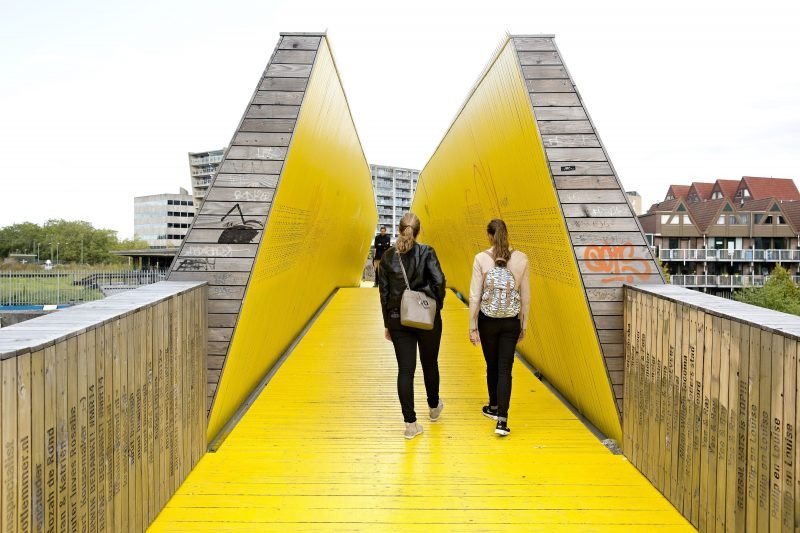Différence Et Répétition
 Reading Deleuze is no piece of cake. It is often a long and hard thought process and it doesn’t leave much room for ‘fun’ excursions into popular culture. This is especially so for the recently published first Dutch translation of Deleuze’s famous dissertation: ‘Différence et Répétition’ (or: ‘Difference and Repetition’, in Dutch ‘Verschil en Herhaling’), published by Boom. Since this weblog is more of an urban development magazine, rather than a philosophical journal, and since Deleuze often writes about architectural design, I will not to discuss the contents of the book, but rather the aesthetics of it, or rather, its looks. Judging the book by its cover, so to speak.
Reading Deleuze is no piece of cake. It is often a long and hard thought process and it doesn’t leave much room for ‘fun’ excursions into popular culture. This is especially so for the recently published first Dutch translation of Deleuze’s famous dissertation: ‘Différence et Répétition’ (or: ‘Difference and Repetition’, in Dutch ‘Verschil en Herhaling’), published by Boom. Since this weblog is more of an urban development magazine, rather than a philosophical journal, and since Deleuze often writes about architectural design, I will not to discuss the contents of the book, but rather the aesthetics of it, or rather, its looks. Judging the book by its cover, so to speak.
If we look at the book, multiple things immediately stand out. Firstly, the contrast between the grey paper and the golden strip that joins front and backside. The paper seems to be of the recycled kind and has a rough feel to it, whereas the golden stripe is smooth and straight. The title of the book is on the front and is in a ‘handwritten’ font, on the backside there is a (quite prominently) printed bar code, nothing else. If we look inside, we see a rich red, combined with the gold that is definitely reminiscent of the luxurious atmosphere surrounding old interiors and royal splendor. Besides all this, it is a rather thick book, but that may not be of much relevance here.
So let’s look at the relationship between the book’s appearance and its ‘content’. We already know the title, but I’d like to name some of the chapter titles here: ‘Difference in itself’, ‘Repetition for itself’, ‘Ideational Synthesis of Difference’ and ‘Asymetrical Synthesis of the Sensible’. By randomly naming some of the books, it becomes clear that we find ourselves within the realm of ‘pure philosophy’. However, I think that we can understand a big deal of this philosophy, just by relating the appearance of the cover of this (any?) book to its contents.
The combination of old, second-hand paper and the golden stripe and the red interior suggests that two completely different realms, of luxury and poverty, can go together without problem. The roughness and smoothness of the cover points to a similar contention. Furthermore, distinguishing the front and backside of the book becomes a ‘difference’ between on the one hand self-made, authenticity and simplicity and on the other pre-fabricated, richness and consumerism. However, these ‘differences’ here don’t seem to be exclusive, but rather enhancive of each other. The main example of this double reinforcement is the title: a ‘handwritten font’, which is a paradoxical, but apparently not impossible phenomenon. What seems to be a difference, is actually an identity.
 The same logic applies to repetition. Recycled paper points to repetition, and also the bar code as a repeating of bars, while at the same time these repeating patterns result in a singularity. A bar code stands for one single item and recycled paper does not consist of old paper, it is a new entity as such. The titles of the chapters also form a repetitive arrangement, but result in a whole new book.
The same logic applies to repetition. Recycled paper points to repetition, and also the bar code as a repeating of bars, while at the same time these repeating patterns result in a singularity. A bar code stands for one single item and recycled paper does not consist of old paper, it is a new entity as such. The titles of the chapters also form a repetitive arrangement, but result in a whole new book.
Concluding, difference and repetition seem to be present in the aesthetics of this book, but only as their own negations. And this is part of what Deleuze tries to argue in his book – there is no distinction possible between the one and the other and the first or the last time, it all results from one and the same source. In this case, applied to the book, but in other cases also connected to architecture. In ‘The Smooth and the Striated’, Deleuze conceptualizes the notion of space in terms of fluidity, organics and organization, strategy. It is beyond the scope of this short article to go into this, but I if you are be interested in some further reading more focused on the topic of this blog, this might be a good starting point. You can find the essay here.
Verschil en Herhaling (original: Différence et Répétition)
Gilles Deleuze
Published by Boom, Amsterdam
464 pages
ISBN: 9789461050427



